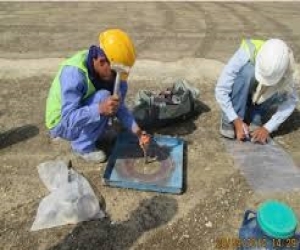


Introduction
Soils consist of individual particles that can slide and roll relative to one another. Shear strength of a soil is equal to the maximum value of shear stress that can be mobilized within a soil mass without failure taking place.
The shear strength of a soil is a function of the stresses applied to it as well as the manner in which these stresses are applied. A knowledge of shear strength of soils is necessary to determine the bearing capacity of foundations, the lateral pressure exerted on retaining walls, and the stability of slopes.
For measuring the distribution of particle sizes in a soil sample, it is necessary to conduct different particle-size tests.
Wet sieving is carried out for separating fine grains from coarse grains by washing the soil specimen on a 75 micron sieve mesh.
Dry sieve analysis is carried out on particles coarser than 75 micron. Samples (with fines removed) are dried and shaken through a set of sieves of descending size. The weight retained in each sieve is measured. The cumulative percentage quantities finer than the sieve sizes (passing each given sieve size) are then determined.
The resulting data is presented as a distribution curve with grain size along x-axis (log scale) and percentage passing along y-axis (arithmetic scale).
Sedimentation analysis is used only for the soil fraction finer than 75 microns. Soil particles are allowed to settle from a suspension. The decreasing density of the suspension is measured at various time intervals. The procedure is based on the principle that in a suspension, the terminal velocity of a spherical particle is governed by the diameter of the particle and the properties of the suspension.
List of Tests conduct with calculation and graphs:
Result:
The permissible settlement in the most practical structures is about 5 mm to 20 mm. And the settlement found in the building foundation is within safe limit.
| Doc | Complete Document with Calculation of soil testing in MS word |